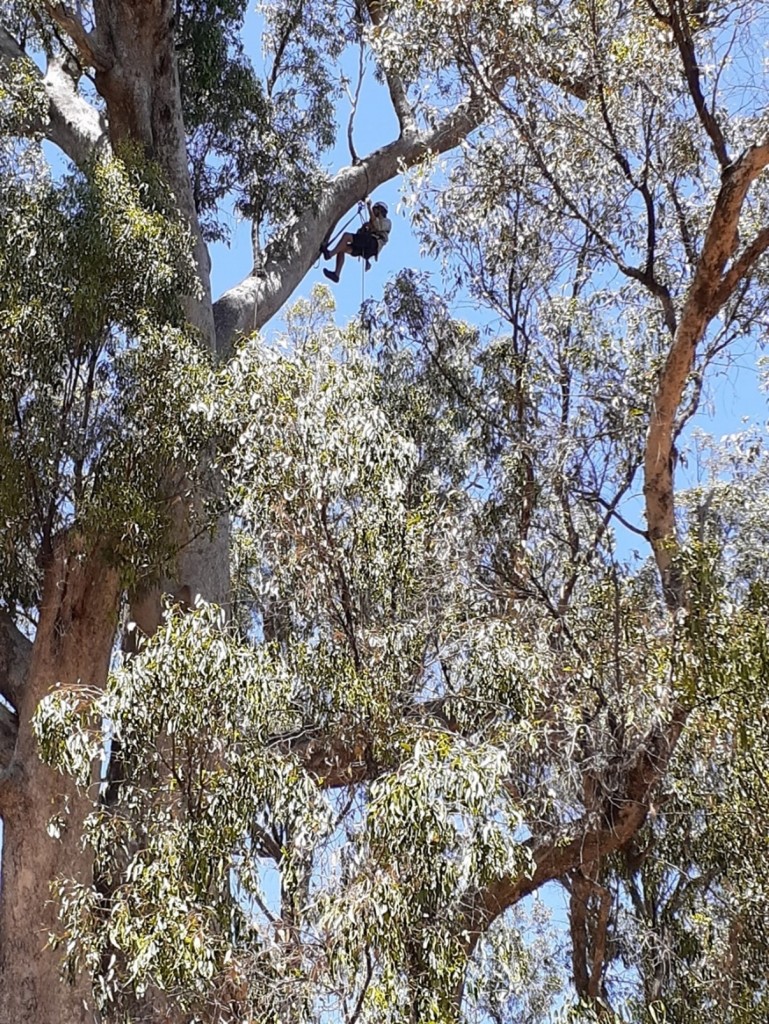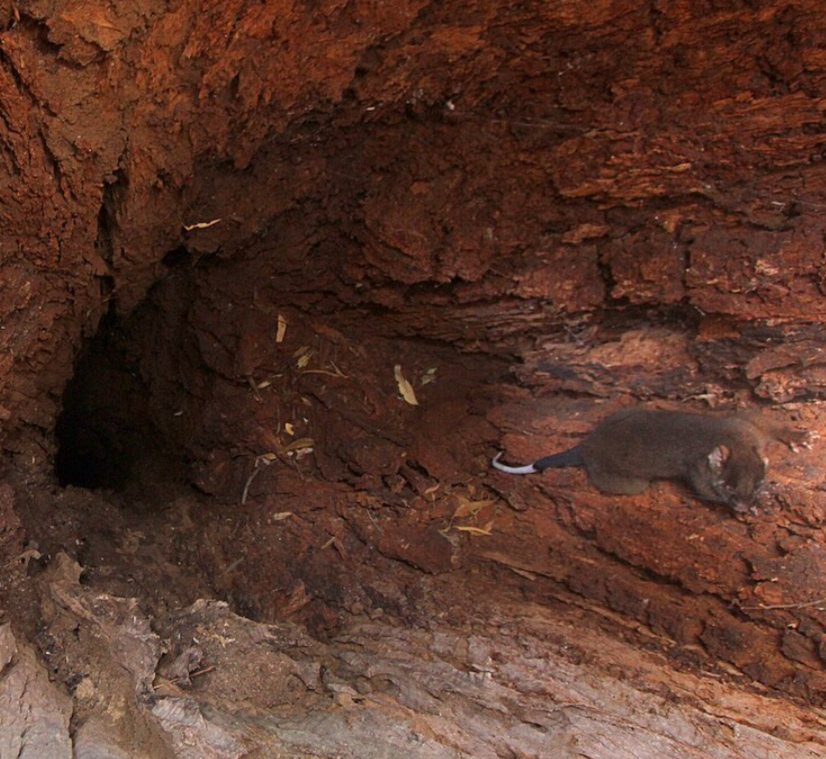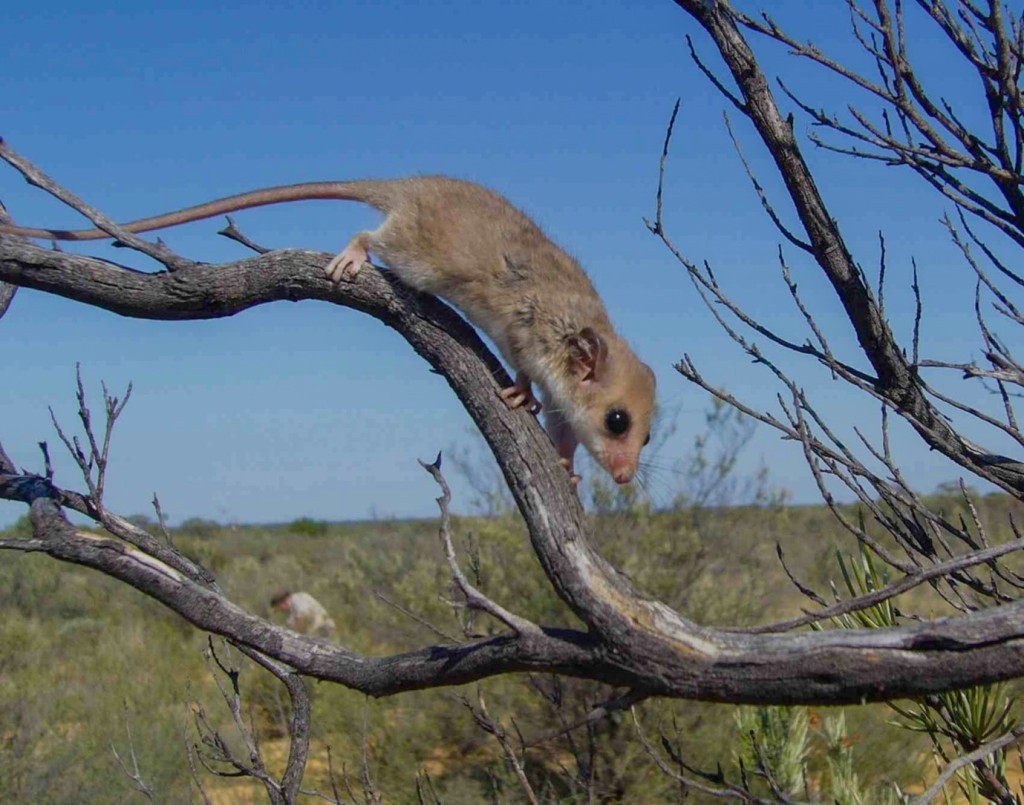Case studies involving tree hollow users and plant–animal interactions in Southwestern Australia
Joshua Newton, Bill Bateman, Paul Nevill (Curtin University) and Adam Cross (Curtin University and Ecological Health Network) describe environmental DNA (eDNA), a new tool for monitoring terrestrial ecosystems, and discuss some of the implications for ecological restoration.
The terrestrial ecosystems we know, and love are under increasing pressure. Habitat loss and fragmentation, species declines, and subsequent reductions in ecosystem services emphasize a need for effective strategies to preserve, manage, and restore these areas into the future. Central to these efforts is robust monitoring, a cornerstone for informed decision-making. However, we are often hindered by a lack of reliable data on species distributions, habitat associations, and community dynamics. While traditional monitoring techniques like direct observations and traps remain essential, the urgency and scale of the global threats demands innovation. Rapid terrestrial biomonitoring approaches are needed to enable frequent monitoring, able to quantify the causes and effects of changes to terrestrial environments. Enter environmental DNA (eDNA), a new tool for monitoring terrestrial ecosystems.
What is eDNA?
Animals continuously shed cells containing DNA into the environment, and this DNA is largely an untapped source of information on evolution, biodiversity, and ecosystem health. However, over the past 15 years we have seen the rapid emergence of a new interdisciplinary field that fuses traditional ecology with molecular methods and advanced computational skills, exploiting this DNA or what we now know as environmental DNA (eDNA). Simply, eDNA is DNA that is collected from any environmental sample such as soil, water, air, the surface of plants, and even spider webs, rather than directly sampled from an individual organism. By testing environmental samples for the presence of eDNA, we remove the need to observe, collect, and visually identify organisms, and can obtain a rapid and simultaneous assessment of entire communities across taxonomic groups from an environmental sample.
With the DNA collected originating from species living in the surrounding environment and containing information on their identity, the potential uses of eDNA for biomonitoring are broad. It is possible to detect cryptic, rare, or threatened species, and large-scale eDNA-based biodiversity assessments are possible thanks to the emergence of high throughput DNA sequencing technology (sequencing of millions of DNA fragments), combined with DNA metabarcoding that allows for the simultaneous identification of many taxa within the same environmental sample. Beyond ‘basic’ biodiversity assessments, eDNA can offer insight into many important ecological and biological questions including aspects of animal behaviour and plant-animal interactions. And, while in its infancy, there is also the opportunity to obtain population-level genetic information from eDNA samples. This information becomes instrumental in the effective management and restoration of ecosystems, marking a significant advancement in our ability to understand and address environmental challenges.

eDNA case study 1: Revealing vertebrate tree hollow user biodiversity with eDNA metabarcoding
Across Australia, numerous vertebrate species use tree hollows for breeding, nesting, and protection. But these trees are being lost, and natural or restored tree recruitment tends to lag far behind this loss due to hollow development taking upwards of 100 years. As a result, tree hollows have become a limiting resource for many of our native species, who are also often bumped off the ‘property ladder’ by introduced species. Knowing who uses or has used hollows is critical if we want to conserve critical hollow-bearing trees and the native species that rely on them. Unfortunately, this can be difficult and time consuming to do by direct observation. But eDNA offers a solution. Testing environmental samples for the presence of eDNA, we successfully collected eDNA from 93 tuart tree (Eucalyptus gomphocephala) hollows throughout National Park and urban settings. Thirty-four vertebrate species were detected: 10 mammals and 24 birds, allowing us to compile a species list of hollow users that has the potential to be more wide-ranging, rapid, and complete than that which would come from direct observation. The sensitivity of eDNA metabarcoding allowed for the detection of a variety of taxa including common species (e.g., Galah), cryptic species (e.g., brushtail phascogale), endangered species (e.g., ringtail possum), and invasive species (e.g., Rainbow Lorikeet), highlighting the wide range of possible applications for this new technique. This molecular tool serves not only as a comprehensive biodiversity assessment method but also as a sensitive approach for detecting individuals that may be elusive using other methods. Looking ahead, eDNA metabarcoding of tree hollows could be used to improve species distribution models of hollow users, identify vital habitat trees in need of conservation, and detect range expansion of invasive hollow-using species, enhancing our understanding of the ecology of vertebrate hollow users and supporting the development of informed management strategies that preserve vital hollow-bearing trees and the species that rely on them.

eDNA case study 2: Environmental DNA metabarcoding of flowers to detect plant–animal interactions.
Plant-animal interactions play a crucial role in the functioning of natural ecosystem and are fundamental in maintaining biodiversity and ecological balance. These interactions occur in various forms, including pollination, herbivory, and mutualistic and parasitic relationships. Monitoring these interactions is essential for the conservation of biodiversity, understanding ecosystem dynamics, and developing informed strategies for the management and restoration of terrestrial environments. However, studying these complex interactions using conventional methods is often difficult, labour intensive and requiring substantial taxonomic expertise for morphological identification of species, a field that is in decline globally. The use of eDNA to detect a variety of these ecological interactions, such as plant pollinators and predators, has recently been explored (as reviewed in Banerjee et al., 2021), and is providing an alternative approach to understanding these complex relationships. One such study conducted within the Helena and Aurora Range (or, in the local Kalamaia language, “Bungalbin”) of Western Australia, tested the use of eDNA in conjunction with visual surveys, on seven native flowering species. These plants represented a range of species with different flower morphologies and different assumed pollinators, many of the plants being of conservation concern and for which little information on pollinating taxa was currently available.
This eDNA metabarcoding survey was the first to simultaneously identify the interaction of insect, mammal, and bird species with flowers, and recorded more animal species visiting flowers than did visual surveys of the same species. In fact, the difference between the methods was remarkable; while eDNA identified 59 taxa, visual surveys identified only 16. This is in part due to eDNA metabarcoding not exclusively detecting pollinators. Non-pollinator taxa such as phytophagous insects (e.g., thrips and aphids), gall inducers (e.g., Cecidomyiidae), predators (e.g., spiders), and large mammals (e.g., kangaroo and horse) were also detected. This is because eDNA metabarcoding of flowers is unable to distinguish between animals that simply come into contact with flowers versus those that act as pollinators. While this might suggest a limitation, it also highlights opportunities for further applications such as the detection of pests and invasive species that interact with plants.
It also must be noted that visual surveys captured native bee species that remained undetected in DNA surveys, highlighting that while powerful and versatile, the use of eDNA metabarcoding, like all survey methods come with certain limitations. However, the use of eDNA metabarcoding of flowers did assist with detecting nocturnal species often missed using visual surveys. This included nocturnal moth species and the presence of a flower visit from a western pygmy possum (Cercartetus concinnus), arguably the cutest Australian marsupial, for which nectar is an important food resource. This suggests that employing both concurrently is the most effective approach for gaining accurate insights into plant-animal interactions. Surveying animal assemblages in remote locations and identifying the species associated with rare or infrequently visited plants can be challenging and it is difficult to capture the full flower-visitor cohorts for rarely visited flowering plants with short visual surveys. Here, eDNA collected from flowering material provided a complementary tool to help survey and monitor plant–animal interactions. Although not all of these organisms detected are likely to affect pollination, eDNA from flowers is able to provide a general overview of the flower-visitor community and potential pests for plant species of interest, and may provide information that would otherwise not be available.

Future of eDNA monitoring
As we delve deeper into the potential of eDNA, it becomes increasingly evident that this technology has the capacity to revolutionize our approach to studying ecological systems. But it’s not without limitations. Currently, it is not able to provide information on an organism’s age, condition, or breeding status, crucial factors for examining the population biology of a target species. Various abiotic factors, such as temperature and UV radiation impacting the degradation of DNA, as well as biotic factors varying DNA deposition rates between taxa, can also influence the efficiency of eDNA methods and need to be further understood. Additionally, the classification of species based on genetic material relies on reference sequence databases, which are still incomplete. For this reason, in many scenarios further baseline studies are still necessary before eDNA methods can be confidently implemented in terrestrial systems. However, as these challenges are addressed and the technology continues to advance, the potential of employing eDNA metabarcoding for monitoring terrestrial systems becomes increasingly probable, offering a transformative and non-invasive tool able to meaningfully contribute to future conservation, natural capital management and restoration efforts. Monitoring of restored biota across the tree of life and active management of restoration is necessary to improve restoration processes and outcomes, and provide evidence to stakeholders that targets are being achieved. Increasingly, eDNA metabarcoding is used as a restoration monitoring tool because it is able to generate biodiversity data rapidly, accurately, non-destructively, and reliably, on a wide breadth of organisms from soil microbes to mammals.